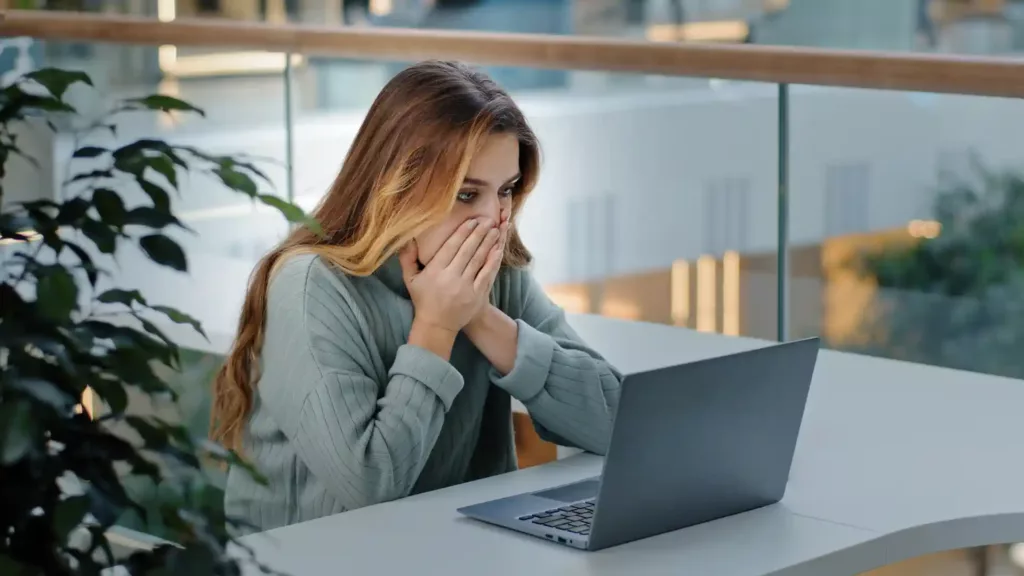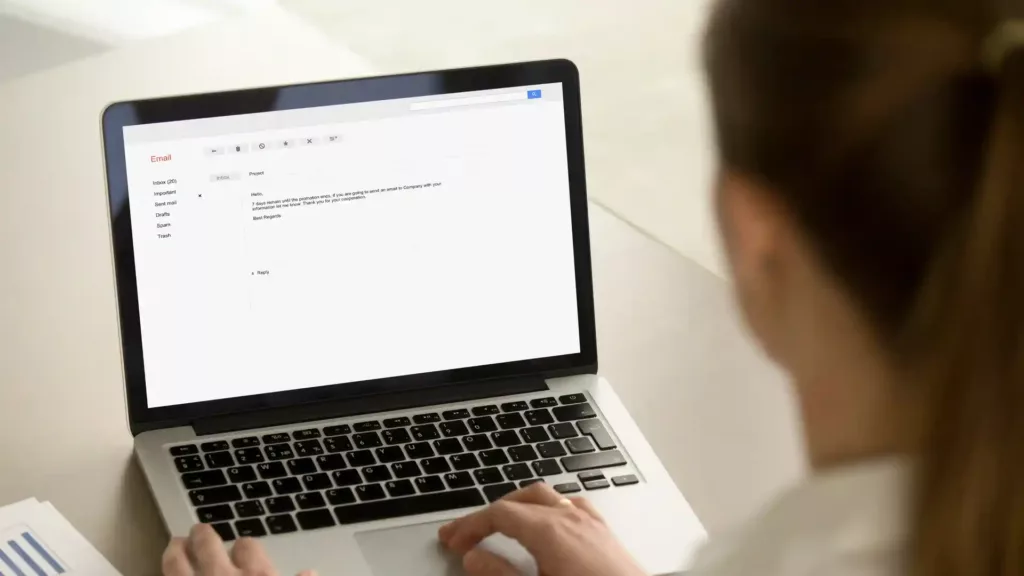Congratulations! You’ve landed that awesome internship and are ready to dive into the professional world. That’s amazing, right? But wait, before you get all caught up in the excitement, there’s a crucial skill you need to nail down: sending professional emails. You may be asking yourself, what is the big deal? Emails are easy, right? Well, yes, and no. Now this isn’t the same thing as sending a random email to your professor or classmate. How you format your emails is oftentimes people’s first impression of you as a professional and of your company. It’s much more than that and you want to be sure to come off as professional. Think of it as your passport to effective communication in the corporate jungle. I know this can all seem intimidating, but don’t worry, I’ve got your back. In this guide, I’ll walk you through the step-by-step process to be sure that your email is as professional as possible. Without further ado let’s dive into what makes a great professional email.
How To Email In An Internship
1. Crafting the Perfect Subject Line (Because First Impressions Matter)
Imagine the subject line of your email as the cover of a captivating book. It’s the first thing your recipient sees, and it needs to hook them in. Keep it succinct, around 6-8 words, and relevant to the content of your email. For instance, when requesting a meeting, consider “Scheduling a Meeting: Exploring Project X.” Oh, and remember to avoid excessive use of capital letters—unless you’re unveiling a BREAKTHROUGH revelation!
2. Greetings: Hello vs. Hey
Now, let’s talk greetings! Think of your choice between “Hello” and “Hey” as a reflection of the tone you want to convey. “Hello” is your go-to for initial contact, as it exudes professionalism. Reserve the casual “Hey” for instances where you’ve established a rapport with the recipient. A dash of respect goes a long way in setting the tone.
3. The Science of Concise and Impactful Introductions
Picture this: You’re crafting a masterpiece, and your introduction is the canvas where it all begins. Start with a warm and friendly greeting, but swiftly transition into the purpose of your email. Clarity is key. If you’re addressing multiple points, consider using bullet points for enhanced readability. In the professional world, brevity is your best friend.
4. The Unbeatable Power of Proofreading
We’re all prone to typos and grammatical blunders, but let’s keep them out of our professional emails. Before you hit the send button, take a moment to proofread. Read each sentence in reverse to catch sneaky errors that your brain might otherwise skim over. Additionally, tools like Grammarly can be a lifesaver.
5. Crafting the Perfect Signature: Striking the Balance
Your email signature is akin to your digital business card. Keep it professional and concise, featuring your full name, internship position, and company. While that quirky quote may light up your day, let’s reserve it for your personal emails. Wrap up your email with a courteous closing line like “Best regards” or “Sincerely” to maintain a professional touch
6. The Right Timing: When to Hit “Send”
Let’s talk timing—your emails aren’t meant to be night owls. Aim to send emails during regular working hours to align with professional norms. If your email gets buried in your recipient’s overflowing inbox, don’t hesitate to send a follow-up after a reasonable time interval. Persistence demonstrates commitment, not pestering.
7. Nurturing the Conversation: Masterful Email Responses Here’s the scoop: your email journey doesn’t conclude with pressing “send.”
When you receive a reply, respond promptly within a day or two, even if it’s a brief acknowledgment of receipt. This reflects your commitment to effective communication and your understanding of email etiquette.
8. The Graceful Recovery: Dealing with Mistakes
Let’s face it—mistakes happen. You’ve hit “send” and then spotted an error. Breathe. If it’s a minor typo, it’s okay to let it slide. However, for factual errors or emails mistakenly sent to the wrong recipient, it’s best to address them head-on. Send a courteous follow-up email with a clear correction. Honesty and accountability are valued traits in the professional world.
9. Elevating Engagement: Incorporating Politeness and Professionalism
Now, let’s delve into the subtleties of politeness and professionalism. It’s not just about getting your message across—it’s about doing so with finesse. Use courteous language and avoid slang or overly casual expressions. Remember, your goal is to leave a positive impression on your recipients and foster productive relationships.
10. The Fine Art of CC and BCC: Navigating Recipient Lists
When it comes to including recipients, the “CC” (Carbon Copy) and “BCC” (Blind Carbon Copy) fields come into play. Use “CC” when you want everyone listed to see who else is receiving the email. “BCC,” on the other hand, conceals recipients’ identities from each other. Always ensure you’re using the right field to maintain transparency and privacy.

11. Attachments: The Do’s and Don’ts
Attaching files? Excellent! But make sure your attachment is relevant and appropriately named. Before you click “send,” take a moment to double-check that you’ve indeed attached the file. Nothing says “rookie mistake” like sending an email mentioning an attachment that’s mysteriously absent
12. Personalizing with Purpose: Tailoring Your Tone
In the realm of professional emails, the “one size fits all” approach doesn’t hold up. Tailor your tone to the recipient’s position, familiarity, and the nature of your relationship. Address concerns with empathy and offer solutions if needed. Show genuine interest, and your emails will be more than just messages—they’ll be meaningful interactions.
13. The Follow-Up Saga: When Persistence Pays Off
Picture this scenario: You’ve sent an email, and there’s no response. Fear not, my friend, for the follow-up email will come to the rescue! Wait a reasonable time—usually a week—and then send a gentle follow-up, reiterating your query or request. Remember, persistence demonstrates your dedication and commitment.
14. Mastering the Art of Email Etiquette
Email etiquette is like the secret sauce of successful email communication. Avoid writing in all caps (it’s the digital equivalent of shouting), refrain from using excessive exclamation marks (one will suffice), and steer clear of emoticons (save those for your personal chats). Your emails should convey professionalism and clarity, not chaos.
15. Cultural Sensitivity: Navigating Global Communication
In our interconnected world, you’re likely to encounter colleagues, clients, or partners from diverse cultural backgrounds. Keep in mind that communication norms can vary widely. Be sensitive to potential cultural differences, especially when it comes to addressing individuals and using humor, idioms, or local references.
16. The Email Signature: Going Beyond Basics
Your email signature is more than just a sign-off—it’s an opportunity for additional branding. Consider including a link to your LinkedIn profile or your company’s social media accounts. This not only enhances your professionalism but also fosters connections beyond the email exchange.
17. Dealing with Delicate Situations: Navigating Conflicts and Critiques
Ah, the art of handling sensitive topics through email—a skill that truly sets you apart. When addressing conflicts or offering critiques, approach the situation with tact. Use a neutral and non-confrontational tone, focusing on facts rather than emotions. Suggest solutions and be open to feedback, creating an environment of constructive dialogue.
18. Crafting Effective Email Templates: Efficiency at Your Fingertips
Efficiency is the name of the game, and email templates are your secret weapon. When you find yourself sending similar emails repeatedly—whether for meeting requests, follow-ups, or introductions—create templates that you can customize as needed. Templates save time and ensure consistency in your professional communication.
19. Streamlining Communication: Using Email Chains Wisely
Email chains can be a blessing or a curse. To use them effectively, start a new chain for each distinct topic or project. This maintains clarity and prevents important information from getting lost in a labyrinth of messages. Also, trim unnecessary messages when replying, keeping the conversation focused.
20. Evolving Your Email Strategy: Embracing Technological Trends
As technology evolves, so does the landscape of email communication. Keep an eye on emerging trends and tools that can enhance your email strategy. From email tracking to AI-powered writing assistants, these innovations can elevate your efficiency and the impact of your messages.
21. The Grand Finale: Wrapping Up Email Conversations
As your email conversations come to a close, finish with grace. Summarize the key points discussed and express gratitude for the recipient’s time and attention. This not only provides closure but also leaves a positive final impression—a final touch that can make a lasting impact.
22. Reflecting and Refining: The Continuous Improvement Cycle
The journey doesn’t end with this guide—you’re now part of a continuous improvement cycle. Take time to reflect on your email interactions. Analyze what worked well and what could be improved. As you gain experience, your email communication skills will naturally evolve and refine.
23. Networking Through Email: Building Professional Relationships
Email isn’t just about tasks; it’s a gateway to building meaningful relationships. Use emails to network, express genuine interest in colleagues’ work, and initiate conversations. Thoughtful emails can lead to valuable connections that extend beyond the digital realm.
Emailing For Internships: The Examples!
Now I know this is a ton of information, but don’t worry! I’ve got you covered with a couple of examples below of what a great and professional email looks like. Study these examples and note how they have taken the information I’ve laid out to create a professional email.
Example 1: Professional Meeting Request
Subject: Meeting Request: Discussing Project Collaboration Hello [Recipient’s Name], I hope this email finds you well. My name is [Your Name], and I am an intern at [Your Company Name]. I have been following the impressive work that you and your team have been doing in the field of [Relevant Field], and I believe there could be exciting opportunities for collaboration. I would be honored to have a conversation with you to discuss potential synergies between our projects. Your insights and expertise would be invaluable as we explore how we can mutually benefit from each other’s strengths. Are you available for a brief virtual meeting sometime next week? I have attached a few possible time slots that work for me. If none of these options are suitable, please let me know your availability, and I will do my best to accommodate. I am truly excited about the possibility of working together and learning from your experience. Thank you for considering my request. I look forward to your response. Best regards, [Your Full Name] [Your Internship Position] [Your Contact Information]
Example 2: Follow-Up After Networking Event
Subject: It was a pleasure connecting at the [Event Name] Hello [Recipient’s Name], I hope you’re doing well. It was a pleasure meeting you at the [Event Name] last week. I was thoroughly impressed by our conversation about [Topic of Discussion], and I wanted to express my gratitude for your insights and advice. Your perspective on [Key Takeaway] resonated with me, and I’ve already started implementing some of your suggestions in my work at [Your Company Name]. I particularly appreciated your thoughts on [Specific Point], and I believe your input will greatly enhance our upcoming project. I would love to continue our conversation and learn more about your experiences in the field. If your schedule permits, would you be open to a short call or a coffee meeting in the coming weeks? I’m confident there’s much more I could learn from you. Once again, thank you for your time and valuable insights. I look forward to the possibility of further collaboration. Best regards, [Your Full Name] [Your Contact Information]
Conclusion: Unleash Your Email Mastery and Soar
This is a lot of information to take in, to be sure. That said if you study this guide and practice these techniques, soon enough it will become second nature. Armed with this extensive guide, you’re equipped not only to send emails but also to create meaningful connections, navigate challenges, and drive your professional journey forward. Each email you craft is an opportunity to showcase your skills, character, and commitment to excellence. As you continue to evolve in your internship and beyond, remember that your email prowess is a reflection of your growth and potential. So, go forth, confident email virtuoso! Craft impeccable messages, build connections, and thrive in the exhilarating world of professional communication. The sky’s the limit—keep soaring!
Who is Campus Commandos?
Our college marketing agency functions to serve two purposes; to provide opportunities for college students, and to market products and services on behalf of brands to students on college campuses and universities across the United States. Contact us to learn more.
Lois Lawson
Lois Lawson has been blogging for Campus Commandos for 6 years. Prior to writing for the blog, Lois had no experience in blog writing, but she has become an expert in the field over the years. She has written about a wide variety of topics, from the latest news in education and sociology to the latest business and marketing trends.



